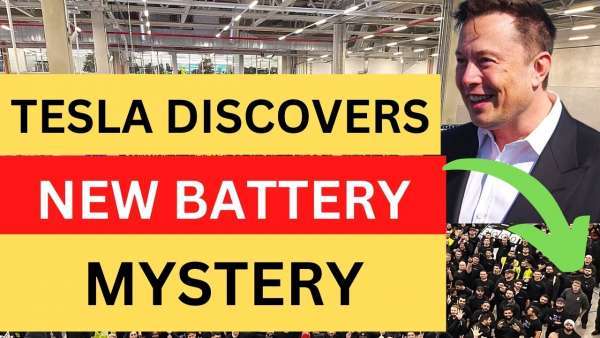
Attention all tech enthusiasts! A game-changing discovery has been made at the Tesla-funded battery research center at Dalhousie University. The researchers have uncovered a surprising detail about lithium-ion battery discharges that could revolutionize the way we power our devices. The findings were simple yet profound, and now it's time to solve the battery issue once and for all. Are you ready to learn about the potentially crucial reason behind lithium-ion batteries' self-discharge? Keep listening, this is a game changer finding, which begs for solution.
So what happened; a potentially crucial reason behind lithium-ion batteries’ tendency to self-discharge has seemingly been discovered by researchers at the Tesla-funded battery research center at Dalhousie University. What’s quite remarkable was that the group’s findings were amazingly simple yet potentially profound.
This is a perfect example of people assuming they know what is going on until they do so simple tests and find out something they never knew before. It’s nice that they found this out! Now let's get this implemented ASAP and say goodbye to phantom drain in electric vehicles.
You know, electronic products such as smartphones and laptops tend to self-discharge over time. It’s an all-too-familiar scenario, where a device loses battery charge despite not being used for a period of time. But while this is considered normal today, researchers from Dalhousie University may have discovered the culprit for self-discharging lithium-ion batteries.
Dr. Michael Metzger, an assistant professor and the Herzberg-Dahn chair and in the Department of Physics and Atmospheric Science at Dalhousie University, noted that a commercial tape that holds electrodes together in lithium-ion batteries could be a key contributor to the self-discharging process.
He explains that “in commercial battery cells, there is tape — like Scotch tape — that holds the electrodes together, and there is a chemical decomposition of this tape, which creates a molecule that leads to the self-discharge. In our laboratory, we do many highly complex experiments to improve batteries, but this time we discovered a very simple thing. It’s a very simple thing — it is in every plastic bottle, and no one would have thought that this has such a huge impact on how the lithium-ion cells degrade.”
Why did it take Tesla or other electric vehicle manufacturers so long to discover this battery self-discharging problem’s reason? Have you ever heard of the Cavendish Experiment? It's a fascinating discovery about how the world works! Imagine hanging a barbell with a mirror on one end from a rope. When you shine a light on the mirror, it makes a pattern that moves back and forth on the wall. But if you put a big mass next to one end of the barbell, the pattern changes because of the added gravity. This experiment sounds simple, but it took over 1,000 years to finally do it! That's pretty epic, right?
So this is a great discovery for electric cars. I wonder how long it takes to find alternatives and implement them. But I here there are alternatives. they just cost a bit more, that's all. In any case, once they figure out a remedy, this could have interesting implications for battery robustness.
If we don't find quick solution to electric car battery self-discharging we will keep on wasting electricity when the electric car is idle. I love how Tesla keeps advancing the battery tech and in turn helps all of mankind in one way.
Armen Hareyan is the founder and the Editor in Chief of Torque News. He founded TorqueNews.com in 2010, which since then has been publishing expert news and analysis about the automotive industry. He can be reached at Torque News Twitter, Facebok, Linkedin and Youtube.






